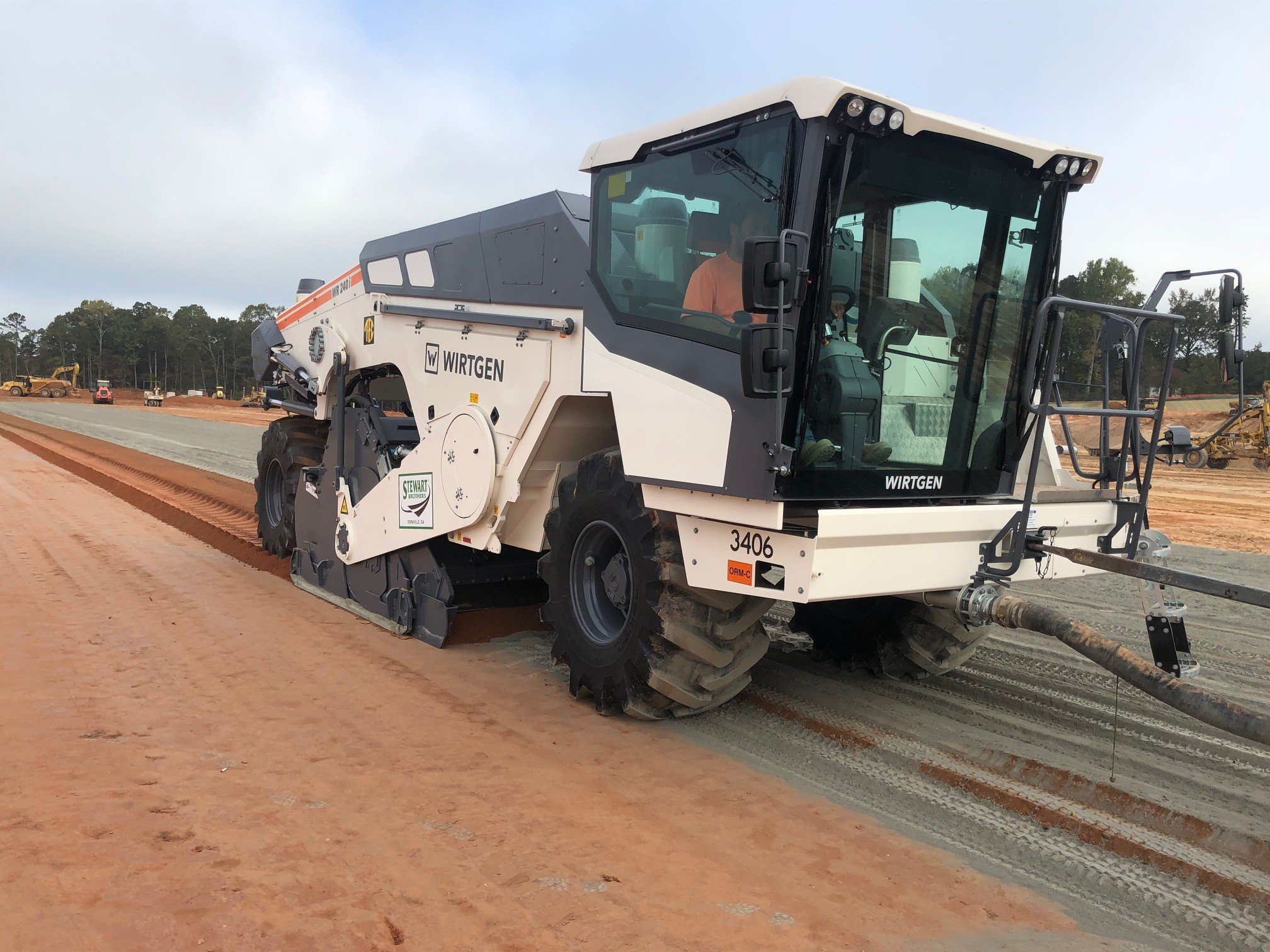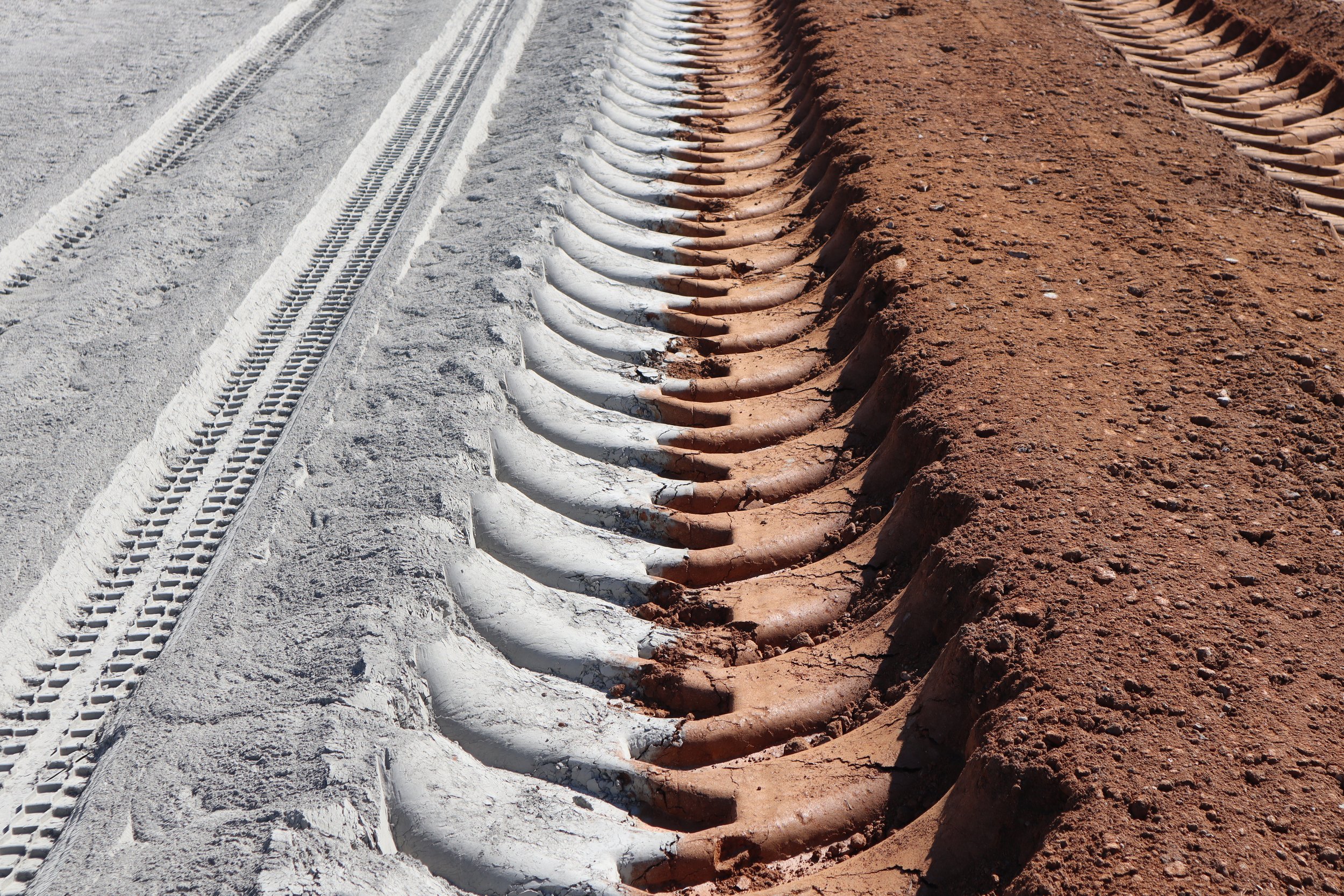
Soil Stabilization
Soil Stabilization Services Atlanta, Georgia
Soil cement stabilization and soil lime stabilization are both excellent methods of quickly turning soft, wet soil into a construction-ready subgrade that will help get your project back on schedule for completion. Stewart Brothers has many years of experience and the expertise needed to successfully stabilize even the most problematic conditions.
Soil Cement Stabilization
Soil cement stabilization is one of the most common requests we receive for stabilization because the process not only dries wet soil, but also creates a super-hard subgrade that can be used as a base, reducing or eliminating the need for stone base material like graded aggregate base (GAB). In most cases, once the soil cement stabilization is complete, asphalt pavement for roads and parking lots, or concrete for building pads, can be placed directly on the cement-stabilized soil.
The soil stabilization process begins with ensuring the elevation of the subgrade is within the specified tolerance and moisture is within optimum range. Powdered cement and controlled water (to activate the cement) is then applied at the specified rate (pounds per square yard) and blended into the soil by an all-wheel drive rotary drum stabilizer capable of creating a homogenous mixture. The soil then dries because of the heat generated from the reaction between water and cement, causing the excess moisture to quickly evaporate. Additionally, the cement attaches to the soil and hardens in a way similar to concrete, creating a rigid and stable subgrade/base. Before curing, the soil cement mixture is compacted and fine graded to the specified finished elevation for the base. After curing, the soil will be stable and hard, allowing for a construction-ready subgrade or base that will be durable and reliable for many years.
Soil Lime Stabilization
The soil lime stabilization process is similar to soil cement stabilization but instead of cement, pelletized lime or powdered lime is typically used to dry the soil. The combination of lime and water gives off heat much like cement and water. Soil lime stabilization dries and stabilizes the soil; however, it does not create its own hard base like soil cement. Typically, a stone or recycled base material like GAB is brought in and placed on top of the compacted, lime-stabilized soil to complete the base.
Depending on your project’s needs, either application can be a useful approach to stabilizing an area that contains soft, wet soil that is not ready for construction, especially during weather cycles that continuously wet the soil and do not allow for natural drying by the sun and warm temperatures.

Contact Us
If you would like to discuss the best soil stabilization method for your project, contact Stewart Brothers today and get your schedule back on track. Our experienced team is ready to help.















